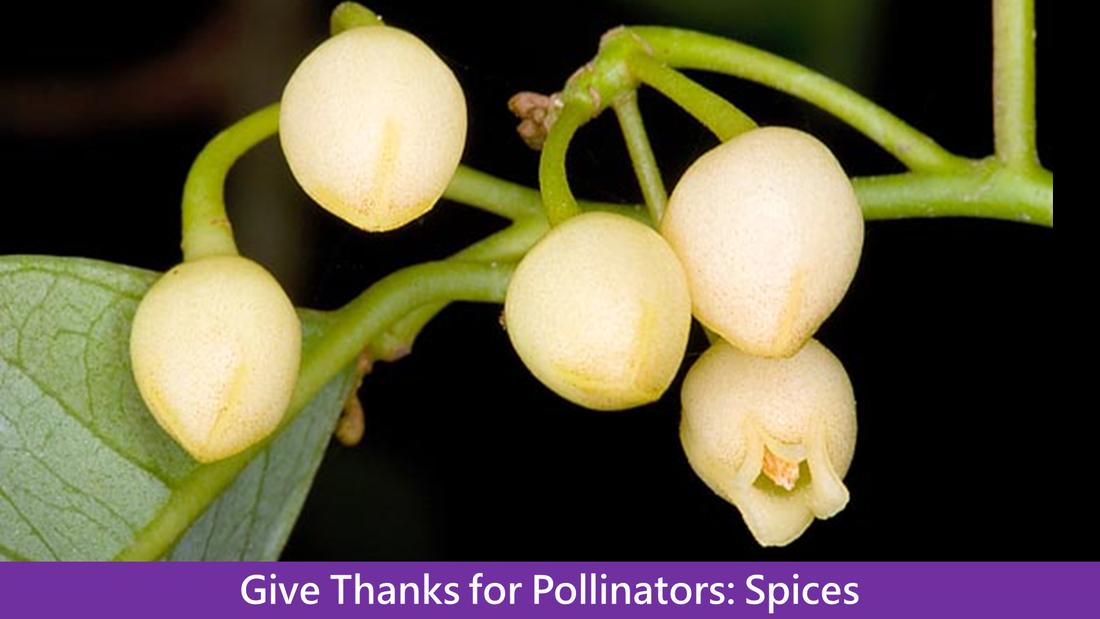Time for dessert! In an earlier post, we described how pumpkins (along with all other squash and gourds) rely on pollinators such as the native squash bee for pollination. But what about the spices that make pumpkin pie so yummy? It’s an exotic tale filled with intrigue!
Cinnamon--comes from the bark of cinnamon trees, which originate in South Asia and grow in wet tropical forests. Even though we don’t eat the fruit of this tree, pollinators play a key role in its reproduction. Cinnamon flowers produce the most seeds if they receive pollen from a different flower, so they rely on insect pollinators such as Asian ‘cousins’ of the honeybee.
Nutmeg--we consume the seed of the nutmeg tree, which is native to Indonesia. Pollination is central to its production and has an interesting story. Half of all nutmeg seeds produce male trees (which produce pollen) and the other half produce female trees (which will produce fruit and seeds). The tiny flowers bloom in the night. Pollinators must transport the pollen from the male trees to the female flowers. Insects such as thrips, beetles and flies do this job.
But why would a pollinator visit a female flower that doesn’t offer any pollen or nectar? Feminine wiles to the rescue. Using a strategy known as ‘mistake pollination’, female flowers send out an odor identical to that of the males to trick pollinators into visiting their flowers. It’s only after they’ve visited the flower (and deposited the pollen) that the deception is uncovered.
Ginger-- is also native to southeast Asia, and most of world production is currently from India. However, at certain times of year, you may find fresh ginger at your local farmer’s market. The part of this plant that we consume is the rhizome, and so does not directly rely on pollinators. In fact, recent studies show that it’s extremely hard to pollinate, and research is currently focusing on identifying its pollinators.
Cloves-- also come from a tree, which is native to Indonesia. The cloves we use are actually flower buds, which are harvested and dried. This tree can self-pollinate, but its genetics are improved by cross-pollination. Like ginger, research is ongoing, but flies, bees, and some butterflies are suspected to play an important role in pollination. Let’s bee thankful!
---- Lisa Schneider
Photo credit: monaconatureencyclopedia.com
Author:
Lisa Schneider


 RSS Feed
RSS Feed